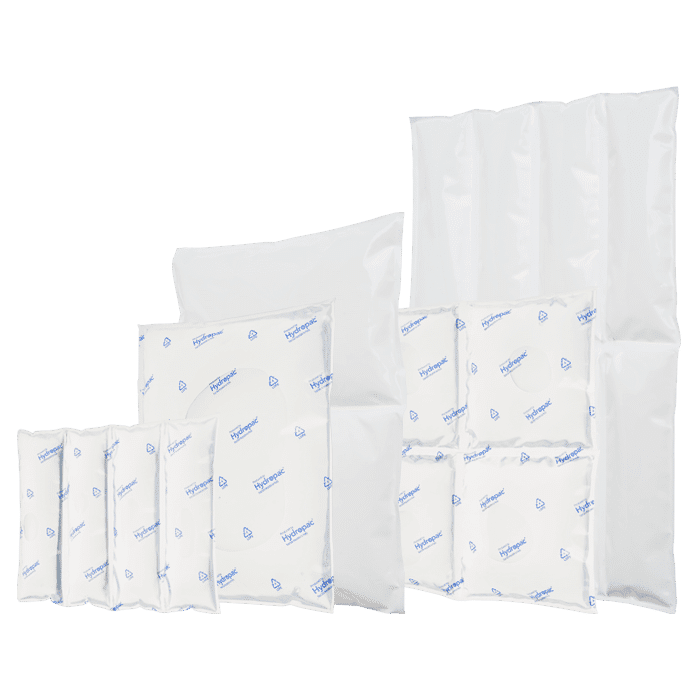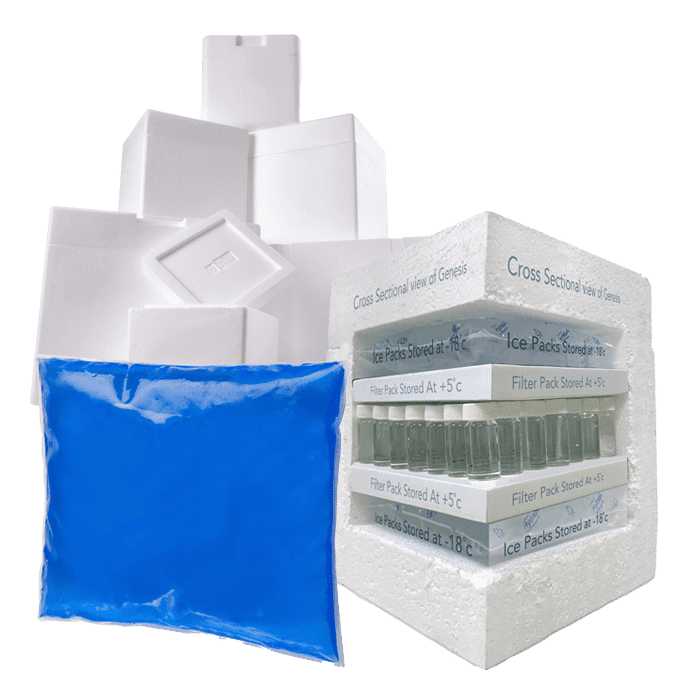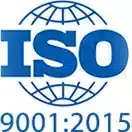Innovations in Cold Chain Packaging for Pharmaceuticals: Exploring Cutting-Edge Solutions
In the intricate realm of pharmaceuticals, where each vial holds the promise of health and healing, the role of cold chain packaging has transcended from a mere logistic necessity to a pivotal role of protecting patient well-being. The biopharma industry loses approximately $35 billion annually as a result of failures in temperature-controlled logistics. As pharmaceutical advancements surge forward and therapeutic breakthroughs become global necessities, the preservation of temperature-sensitive products along their intricate journey has taken centre stage.
Understanding the Importance of Cold Chain Packaging
At the heart of the pharmaceutical supply chain lies the cold chain, a complex web of temperature-controlled environments meticulously orchestrated to preserve the efficacy, safety, and integrity of pharmaceutical products. Its significance transcends conventional packaging; it’s a shield against the formidable threats posed by temperature fluctuations.
At its core, the cold chain is a collective effort. It involves a series of temperature-controlled steps that begin with the production of pharmaceutical products and extend to their ultimate delivery to patients. The cold chain comprises storage facilities, transportation vehicles, monitoring systems, and packaging solutions, all orchestrated with meticulous precision. Its mission is singular: to ensure that every vial, capsule, or ampoule reaches its destination with the therapeutic promise intact.
The cold chain’s importance in preserving pharmaceutical product integrity cannot be overstated. It forms the backbone of quality assurance, eliminating the risks of temperature fluctuations. Pharmaceutical products, ranging from life-saving vaccines to delicate biologics, are exquisitely sensitive to temperature variations. Deviations, even by a few degrees, can trigger irreversible changes in their chemical composition, rendering them ineffective or even harmful.
The Critical Need for Temperature Control to Maintain Drug Efficacy and Patient Safety
Temperature control isn’t a mere technicality; it’s a matter of life and death. The efficacy of pharmaceutical products lies on their ability to retain their intended properties throughout the journey from manufacturer to patient. Deviations from the optimal temperature range can undermine this efficacy, leading to compromised health outcomes.
Consider a scenario where a vaccine, designed to shield against a deadly disease, is exposed to temperatures beyond its tolerance during transit. The consequences are dire – reduced efficacy, inadequate protection, and potential harm. Similarly, medications formulated to alleviate suffering can become ineffective if their chemical structures are altered due to temperature excursions.
Beyond efficacy, patient safety is at stake. In a world where patients place their trust in pharmaceutical therapies, the cold chain plays a role to protect against potential dangers. It ensures that when a patient receives a medication, they are receiving the exact formulation that clinicians and researchers intended, with no compromises.
The Impact of Temperature Excursions on Pharmaceutical Products’ Quality and Potency
Temperature excursions, even for a short while, can set off a chain reaction of consequences have dire effects on pharmaceutical products. When exposed to excessive heat or cold, pharmaceutical molecules can undergo transformations that compromise their stability and potency.
Proteins, enzymes, and other biomolecules that form the basis of many pharmaceuticals are particularly vulnerable. High temperatures can lead to denaturation – a process where these molecules lose their three-dimensional structure, rendering them biologically inactive. On the other hand, low temperatures can cause crystallisation, altering the physical properties of the product.
The delicate balance of preservatives and additives within pharmaceutical formulations can be disrupted by temperature fluctuations, leading to unintended chemical reactions. In complex biologics, such as monoclonal antibodies, these reactions can be catastrophic, rendering the product useless.
Custom chilled solutions for you
Hydropac offers every customer a customized solution for chilled and conditioned shipping. For example, we help a customer with limited freezing capacity to deliver gel packs frozen and ready to use, and we can manufacture almost all shapes and sizes of cooling elements. As a customer, you come first: we are here to help you.
Evolving Technologies in Temperature-Controlled Packaging
The evolution of cold chain packaging isn’t a choice; it’s an essential requirement for pharmaceutical logistics. As the demand for pharmaceutical integrity grows more pressing, so do the technologies designed to meet this challenge.
Latest Materials and Technologies in Cold Chain Packaging
The landscape of cold chain packaging is always changing, as traditional materials make way for advanced solutions capable of withstanding the most unforgiving conditions. Cutting-edge insulation materials have emerged as part of this transformation. These materials, often polymer-based, possess exceptional insulative properties that create an impenetrable barrier against external temperature fluctuations. By encasing pharmaceutical products within a thermal cocoon, these materials provide a vital line of defence, ensuring that the optimal temperature range is maintained throughout the journey.
Nanotechnology has also emerged as a game-changer in cold chain packaging. Nanomaterials, engineered at the molecular level, exhibit remarkable properties that enhance temperature control. These materials can be integrated into packaging structures, acting as thermal regulators that absorb and release heat as needed. This revolutionary approach ensures that pharmaceutical products remain unscathed, regardless of the climatic challenges they encounter.
Advanced Insulation Materials and Superior Thermal Protection
With temperature-controlled packaging, insulation materials are the cornerstone of reliability. The need for superior thermal protection has led to the development of insulation materials that set new benchmarks for performance. Aerogels, for instance, exhibit an extraordinary ability to insulate, effectively blocking the transfer of heat.
Vacuum-insulated panels (VIPs) represent another stride in insulation technology. These panels, characterized by their low thermal conductivity, create a vacuum between layers, effectively eliminating the transfer of heat through conduction and convection. This innovation has a profound impact on maintaining consistent temperatures, ensuring that pharmaceutical products traverse the cold chain with unwavering stability.
Amongst the array of innovations, none holds as much promise as phase-change materials (PCMs). These substances possess a unique ability to change their state (solid to liquid or vice versa) while absorbing or releasing latent heat. In cold chain packaging, PCMs play a pivotal role in maintaining consistent temperatures.
PCMs are strategically integrated into packaging structures, serving as thermal batteries that absorb excess heat during temperature spikes and release it when temperatures drop. This dynamic equilibrium ensures that the internal environment of the packaging remains within the desired temperature range. As pharmaceutical products have to travel through unpredictable conditions, PCMs, meticulously regulate the microclimate and safeguarding the integrity of each vial, capsule, or syringe.
Innovative Packaging Designs and Solutions
In the ever-evolving landscape of cold chain logistics, innovation isn’t just a concept; it’s a necessity. Innovative packaging designs that can ingeniously integrate functionality, efficiency, and sustainability, mark a pivotal milestone. These designs transcend the conventional; they optimise spatial utilisation, diminish weight burdens, and champion the cause of ecological responsibility. But the true leaders of innovation are active packaging solutions – thermal blankets and refrigerated containers. These dynamic solutions resiliently mitigate the impact of external temperature oscillations, ensuring the sanctity of pharmaceutical products.
Smart packaging, with its embedded intelligence, introduces a new era of interactivity. Imagine a packaging that communicates, that is not just a vessel, but a dynamic participant in the cold chain. Temperature sensors embedded within the fabric of packaging, track the product’s journey, relay data in real-time, allowing stakeholders to intervene promptly when conditions deviate from the optimal range. The evolution from packaging to a partner in maintaining product integrity is emphasised here, redefining the narrative of pharmaceutical logistics.
The Role of Data and Analytics
In an age defined by data-driven insights and technological advancements, the cold chain industry has undergone a transformative shift. Data and analytics have emerged as the architects of efficiency, reshaping the landscape of cold chain packaging.
The modern cold chain is no longer a sequence of discrete steps. At every juncture, data is generated – from the moment a pharmaceutical product is packaged to its final delivery to a patient. This data holds the key to unlocking unprecedented efficiency in the cold chain.
Data-driven insights optimise every facet of cold chain packaging. Routes can be fine-tuned based on historical transit data, ensuring that pharmaceutical products travel the most efficient path. Temperature profiles can also be analysed to identify patterns and vulnerabilities, allowing stakeholders to fortify packaging against potential risks. Even the smallest details, such as the placement of temperature sensors within packaging, can be informed by data, guaranteeing accuracy and reliability of the medical products.
The ability to detect temperature fluctuations in real-time is a game-changer. Imagine a scenario where a slight temperature deviation triggers an immediate response, preventing potential damage to pharmaceutical products. This level of precision isn’t just aspiration; it’s reality, thanks to the fusion of data and analytics.
Predictive analytics, driven by historical data and real-time inputs, anticipate temperature excursions before they occur. Algorithms, finely tuned by machine learning can analyse temperature trends, environmental conditions, and even transportation dynamics to predict potential deviations. When a threshold is breached or an irregularity is detected, alerts are issued, and corrective actions are initiated. Pharmaceutical products are spared from the perils of temperature instability, and the cold chain’s efficiency is elevated to new heights.
In this era of innovation, patient well-being remains the central refrain. Cold chain packaging, with its many advancements, stands as a testament to the pharmaceutical industry’s commitment to this principle. To witness these transformative solutions in action, and to embrace a future where pharmaceuticals reach patients with unwavering efficacy, visit Hydropac. Here, innovation flourishes, patient safety thrives, and each step in the cold chain becomes a celebration of excellence in pharmaceutical logistics.
Sustainability Hydropac and CSR
Sustainability isn’t just a trend for us – it’s a promise. As we innovate, create, and lead, we keep our planet’s well-being at the forefront. With Hydropac, you’re not just preserving the quality of your cargo; you’re contributing to a healthier world.
Experience the power of sustainable temperature assurance with Hydropac – where excellence and environmental responsibility coexist for a brighter future.





